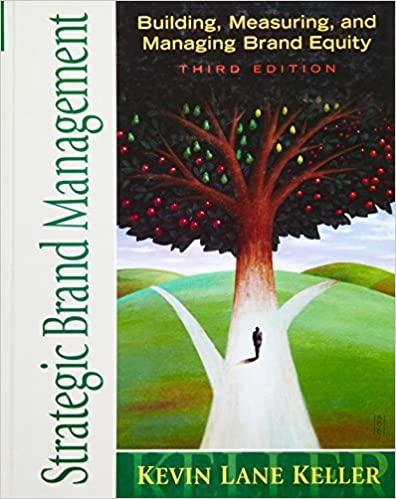Question
Case Study #3: The Accounting Software Installation Project Description Sitting in her office, Karin Chung is reviewing the past four months of the large corporate
Case Study #3: The Accounting Software Installation Project
Description
Sitting in her office, Karin Chung is reviewing the past four months of the large corporate accounting software installation project she has been managing. Everything seemed so well planned before the project started. Each company division had a task force that provided input into the proposed installation along with potential problems. All the different divisions had been trained and briefed on exactly how their division would interface and use the forthcoming accounting software. All six contractors, which included one of the Big Five consulting companies, assisted in developing the work breakdown structurecosts, specifications, time.
Karin hired a consultant to conduct a one-day "partnering" workshop attended by the major accounting heads, a member of each task force group, and key representatives from each of the contractors. During the workshop, several different team-building exercises were used to illustrate the importance of collaboration and effective communication. Everyone laughed when Karin fell into an imaginary acid pit during a human bridge-building exercise. The workshop ended on an upbeat note with everyone signing a partnering charter that expressed their commitment to working together as partners to complete the project.
TWO MONTHS LATER
One task force member came to Karin to complain that the contractor dealing with billing would not listen to his concerns about problems that could occur in the Virginia division when billings are consolidated. The contractor had told him, the task force member, that he had bigger problems than consolidation of billing in the Virginia division. Karin replied, "You can settle the problem with the contractor. Go to him and explain how serious your problem is and that it will have to be settled before the project is completed. "Later in the week in the lunchroom she overheard one consulting contractor bad-mouthing the work of another- "never on time, interface coding not tested." In the hallway the same day an accounting department supervisor told her that tests showed the new software will never be compatible with the Georgia division's accounting practices. While concerned, Karin considered these problems typical of the kind she had encountered on other smaller software projects.
FOUR MONTHS LATER
The project seemed to be falling apart. What happened to the positive attitude fostered at the team-building workshop? One contractor wrote a formal letter complaining that another contractor was sitting on a coding decision that was delaying their work. The letter went on: "We cannot be held responsible or liable for delays caused by others." The project was already two months behind, so problems were becoming very real and serious. Karin finally decided to call a meeting of all parties to the project and partnering agreement. She began by asking for problems people were encountering while working on the project. Although participants were reluctant to be first for fear of being perceived as a complainer, it was not long before accusations and tempers flared out of control. It was always some group complaining about another group. Several participants complained that others were sitting on decisions that resulted in their work being held up. One consultant said, "It is impossible to tell who's in charge of what." Another participant complained that although the group met separately on small problems, it never met as a total group to assess new risk situations that developed. Karin felt the meeting had degenerated into an unrecoverable situation. Commitment to the project and partnering appeared to be waning. She quickly decided to stop the meeting and cool things down. She spoke to the project stakeholders: "It is clear that we have some serious problems, and the project is in jeopardy. The project must get back on track, and the backbiting must stop. I want each of us to come to a meeting Friday morning with concrete suggestions of what it will take to get the project back on track and specific actions of how we can make it happen. We need to recognize our mutual interdependence and bring our relationships with each other back to a win/win environment. When we do get things back on track, we need to figure out how to stay on track."
Case Questions
- To what extent do you think there was a clear scope statement and work breakdown structure for this project. Based on the information that is available in this case, draft your own scope statement and work breakdown structure for this project.
Step by Step Solution
There are 3 Steps involved in it
Step: 1

Get Instant Access to Expert-Tailored Solutions
See step-by-step solutions with expert insights and AI powered tools for academic success
Step: 2

Step: 3

Ace Your Homework with AI
Get the answers you need in no time with our AI-driven, step-by-step assistance
Get Started


